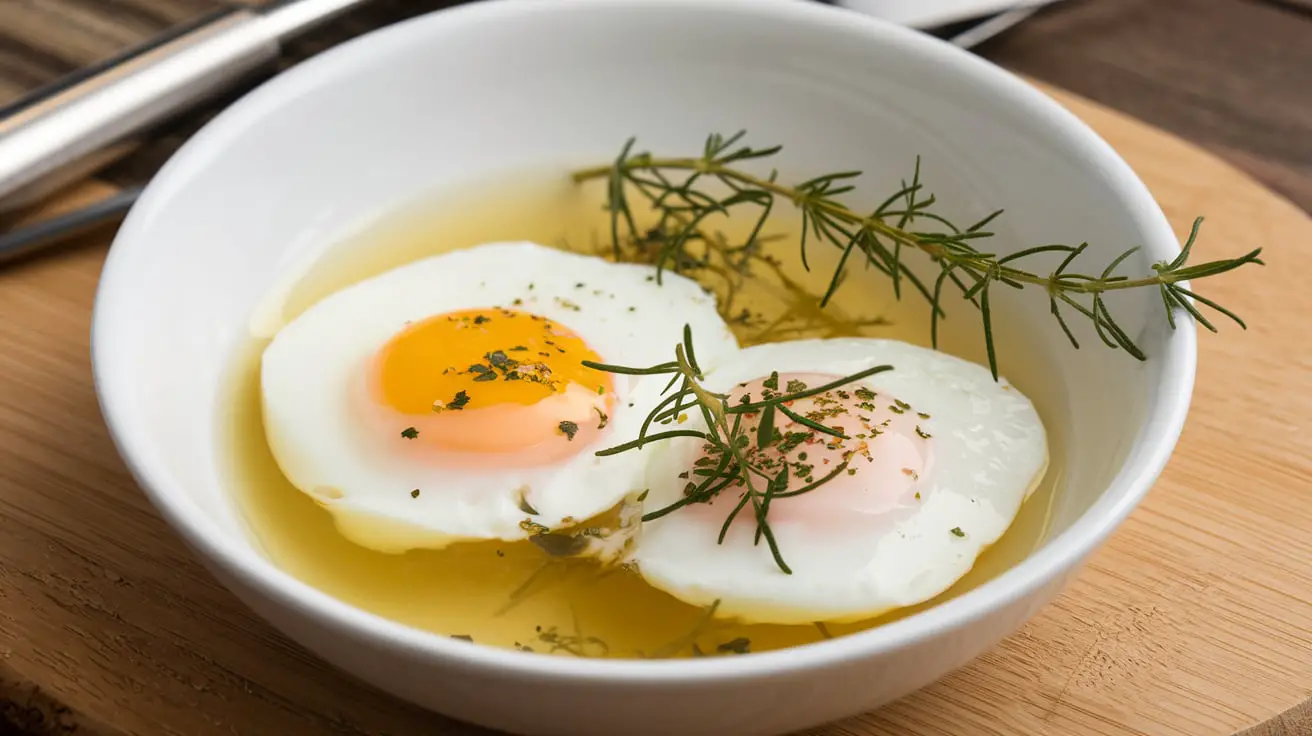Microwave Poached Eggs: The Ultimate Guide to Perfect Eggs Every Time
Poached eggs are a beloved dish, often enjoyed for breakfast, brunch, or as a rich protein addition to salads, bowls, and various other dishes. Traditionally, making poached eggs requires careful monitoring on the stovetop, but with the microwave, you can enjoy poached eggs faster, more easily, and just as perfectly cooked. In this guide, we’ll walk you through how to make the perfect microwave poached eggs from start to finish and answer some of the most common questions surrounding this quick and efficient cooking method.
If you’re wondering whether you can make perfect poached eggs in a microwave, the answer is yes. It’s all about using the right method. Simply Recipes offers an excellent guide that covers everything you need to know to get started (link to Simply Recipes). It explains each step and gives tips for achieving the best results.
While traditional stovetop poaching methods are certainly effective, the microwave offers significant advantages. It’s quicker, more energy-efficient, and easier to clean up. If you’re in a rush in the morning or simply looking for a hassle-free way to prepare poached eggs, microwave poached eggs are the perfect solution. As highlighted by Serious Eats, microwave poached eggs offer the same texture and quality as stovetop poached eggs with far less effort (link to Serious Eats).
Why Microwave Poached Eggs Are a Great Option
Time Efficiency
One of the main reasons people love microwave poached eggs is how fast they are to make. With just a few minutes in the microwave, you’ll have perfectly poached eggs, without the need to bring a pot of water to a boil or stand over the stove watching your eggs.
- Faster than traditional poaching methods
- Microwave poached eggs take 1 to 2 minutes
- No need to monitor the cooking closely
Ease of Preparation
You don’t need specialized equipment or complicated skills to make microwave poached eggs. A microwave-safe dish, water, and fresh eggs are all you need. There’s no need for multiple pans or constant stirring.
- Simple setup
- No need for pots or strainers
- Perfect for beginners
Energy Conservation
Poaching eggs in the microwave uses far less energy compared to boiling water on a stovetop. The microwave cooks more efficiently, and since you only need a few minutes, the energy consumption is minimal.
- Less electricity used than stovetop cooking
- Quick cooking means less energy consumption
- Perfect for single or small servings
How to Make Microwave Poached Eggs
Essential Equipment and Ingredients
To make microwave poached eggs, you’ll need:
- Microwave-safe container: A bowl or cup that is deep enough to submerge the egg halfway in water.
- Fresh eggs: The fresher the egg, the better the result. Older eggs may spread out more in the water, affecting the texture.
- Water: Enough to cover the egg about halfway.
- Optional vinegar: Some prefer to add a small splash of vinegar to help the egg whites set faster, though this is optional.
Step-by-Step Guide
- Prepare Your Water Start by filling a microwave-safe container with about half a cup of water. The water should be deep enough to submerge the egg halfway.
- Crack the Egg into the Water Crack an egg and gently slide it into the water. It’s a good idea to crack the egg into a small bowl first to ensure you don’t get any shell fragments, then slide it carefully into the microwave-safe dish.
- Microwave the Egg Place a microwave-safe plate or lid over the container to prevent any splatter. Microwave on high for about 45 seconds to 1 minute. The exact time will depend on your microwave’s wattage, so adjust accordingly.
- Check the Egg After microwaving, carefully check the egg. The whites should be set, while the yolk remains soft and runny. If the egg is not fully cooked, return it to the microwave for another 10-second interval until the whites are fully set.
- Serve Once your egg is ready, carefully remove it from the water with a spoon or slotted spoon. Let it drain for a few seconds, then serve immediately.
Troubleshooting Common Issues
Making microwave poached eggs can sometimes lead to some common issues, but with a few adjustments, you’ll be able to perfect your technique.
- Overcooked Eggs: If your egg is overcooked, reduce the cooking time by 5 to 10 seconds in the next batch. The whites should be firm, but the yolk should still remain soft and runny.
- Exploding Yolks: This can happen if you cook the egg too long or if you don’t cover the dish properly. To avoid this, ensure the yolk is slightly broken or pricked before microwaving.
- Uneven Cooking: Stirring the water gently before microwaving can help ensure that the water and heat are distributed evenly. You can also cover the dish with a microwave-safe lid to prevent hot spots.
Tips for Perfect Microwave Poached Eggs
Achieving a perfect poached egg in the microwave requires a bit of practice, but with these tips, you’ll be making perfect eggs every time:
- Use Room Temperature Eggs: Cold eggs straight from the fridge may not cook evenly. Let them sit out for a few minutes to reach room temperature.
- Cover the Container: Covering the dish helps keep the heat and steam trapped inside, cooking the egg more evenly and preventing it from drying out.
- Use Fresh Eggs: Fresh eggs hold together better when poached, leading to a more aesthetically pleasing result.
- Experiment with Time: Microwave wattage varies, so start with 45 seconds and adjust based on your microwave’s power.
Creative Recipes Using Microwave Poached Eggs
Once you’ve mastered the technique for making microwave poached eggs, you can use them in a variety of dishes. Here are a few creative ideas:
- Poached Eggs on Avocado Toast: Add a perfectly poached egg on top of mashed avocado spread on whole-grain toast for a nutritious breakfast or snack.
- Poached Eggs on Grain Bowls: Add poached eggs to bowls filled with quinoa, rice, or other grains. It’s a delicious way to enhance a healthy, protein-packed meal.
- Poached Eggs with Sautéed Vegetables: Top sautéed vegetables like spinach, kale, mushrooms, or tomatoes with a poached egg for a simple yet satisfying meal.
- Poached Eggs with Sautéed Greens: For a low-carb option, sauté spinach or arugula and top with a poached egg for a healthy, filling meal.
Nutritional Benefits of Poached Eggs
Poached eggs are packed with protein, vitamins, and essential nutrients. Here’s a quick look at the nutritional profile of a standard poached egg:
- Calories: One large poached egg contains around 70 calories.
- Protein: Eggs are an excellent source of high-quality protein, which helps with muscle building and repair.
- Vitamins and Minerals: Eggs provide vitamins A, D, and B12, along with minerals like iron, zinc, and selenium.
- Healthy Fats: Eggs contain healthy fats that support brain function and overall health.
Compared to other cooking methods like scrambling or frying, poached eggs retain more of their nutrients since they are cooked at lower temperatures and without added fats.
Safety Considerations
While microwave poached eggs are generally safe to prepare, there are a few safety tips to keep in mind:
- Handle with Care: After microwaving, the bowl and water will be hot. Use oven mitts or a towel to handle the container.
- Fully Cooked Eggs: If you’re concerned about foodborne illnesses, ensure your eggs are fully cooked. The whites should be opaque and firm, while the yolk should remain runny.
- Use Microwave-Safe Containers: Always use containers marked microwave-safe to avoid melting or chemical leaching.
Frequently Asked Questions (FAQs)
Can I Poach Multiple Eggs at Once in the Microwave?
Yes! You can poach multiple eggs in the microwave. Just ensure each egg is fully submerged in the water, and adjust the cooking time slightly. The more eggs you add, the longer they’ll take to cook.
Why Did My Egg Explode in the Microwave?
If your egg exploded, it’s likely because the yolk wasn’t pierced before microwaving or because the egg was microwaved too long. Make sure to poke the yolk gently before microwaving, or cover the container to prevent explosions.
How Can I Achieve a Runny Yolk with Firm Whites?
To get the ideal poached egg with firm whites and a runny yolk, microwave the egg for a shorter time. Start with 45 seconds and check the egg. If the whites are still runny, return it to the microwave for 5 to 10 seconds.
Can I Use a Plastic Container for Poaching Eggs in the Microwave?
Yes, but it’s important to ensure the container is microwave-safe. Glass or ceramic is generally preferred for even heat distribution.
What Is the Best Microwave Wattage for Poaching Eggs?
Most microwaves range from 700 to 1,200 watts. For the best results, use a microwave around 1,000 watts. Adjust the time based on your microwave’s wattage.

